In today’s fitness era, a well-rounded approach to strength and muscle building is critical. The first muscles that often come to mind are the biceps, popular for their visible prominence. Yet, the back, an equally vital component, often gets overlooked. Training your back and biceps not only builds a balanced, aesthetic physique but also contributes significantly to your overall strength and functional capabilities. These muscle groups are essential in performing a multitude of daily activities, from carrying groceries to lifting heavy objects. In this section, we’ll delve into why incorporating back and bicep training into your regimen is a necessity.
The rewards of regular back and bicep workouts extend beyond mere physical appearance. Yes, sculpted biceps and a well-defined back are desirable, but the advantages run deeper. Strength in these areas can drastically improve your athletic performance, aid in other fitness activities, and even reduce the risk of injuries. Furthermore, a strong back ensures better posture, relieving or preventing back pain that’s often linked to sedentary lifestyle habits.
In the forthcoming sections of this article, we will explore the muscle anatomy of the back and biceps, introduce key principles for muscle growth, and provide a series of effective exercises tailored to these muscle groups. We’ll also share a sample workout routine and give tips on maximizing your muscle growth. Our aim is to equip you with the knowledge you need to stimulate massive muscle growth in your back and biceps. So, let’s dive into the world of back and bicep training and unleash your potential to gain impressive muscle mass.
Understanding the Anatomy
Detailed Explanation of the Muscles in the Back
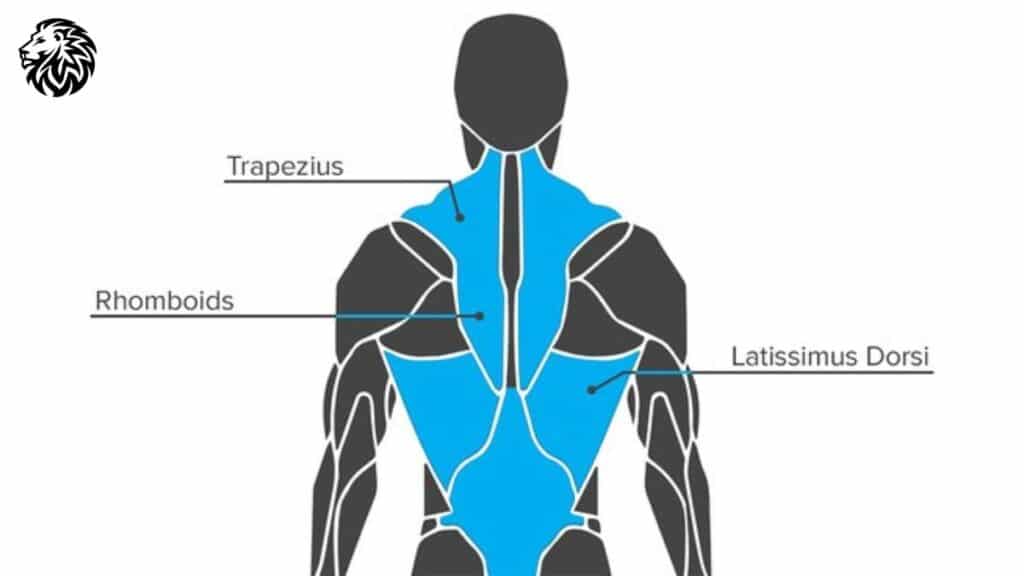
- Latissimus Dorsi: Often referred to as the “lats”, the latissimus dorsi are large muscles in the shape of a butterfly wing, extending down each side of your back. They are essential for a variety of movements, including pulling actions and providing stability to your spine.
- Rhomboids: Situated between your shoulder blades, the rhomboid major and rhomboid minor muscles play crucial roles in retracting the scapulae, contributing to good posture. They work in coordination with the trapezius to facilitate a range of shoulder movements.
- Trapezius: This large, trapezoid-shaped muscle extends down the back of your neck and upper spine. The trapezius helps move, rotate, and stabilize the scapulae and supports the arm and shoulder in a wide range of movements.
Detailed Explanation of the Muscles in the Bicep
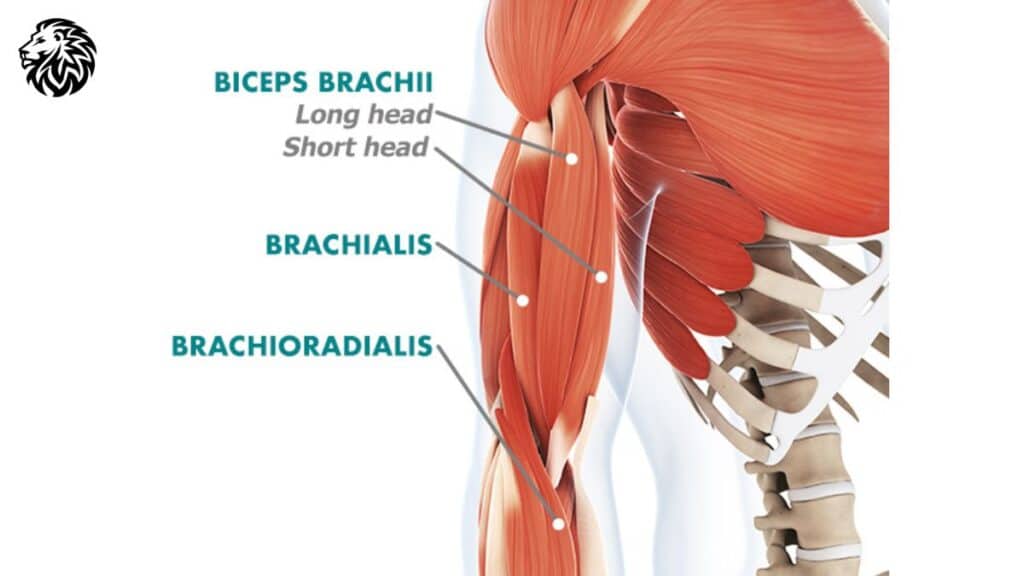
- Biceps Brachii: The biceps brachii, commonly known as the biceps, is a two-headed muscle that creates the bulk of the muscle mass in the upper arm. Its primary function is elbow flexion, forearm supination, and it also assists in shoulder movements.
- Brachialis: Located underneath the biceps brachii, the brachialis muscle is solely responsible for elbow flexion, making it a key muscle in any pulling or lifting movement.
The Role These Muscles Play in Daily Life and in Fitness
In daily life, these muscles are instrumental in a plethora of activities. Back muscles help in lifting heavy objects, bending, and reaching out for things. They also play a vital role in maintaining good posture. Bicep muscles, on the other hand, aid in lifting, pulling, and tasks involving elbow flexion such as bringing a cup to your mouth or brushing your hair.
In the realm of fitness, strong back and bicep muscles can enhance your performance across many exercises, not just those directly targeting these areas. They are particularly important in weightlifting and bodybuilding but also offer considerable benefits to athletes in sports such as swimming, rowing, and climbing. Training these muscles can also contribute to improved functional strength, helping prevent injuries and maintain a healthy, active lifestyle as you age.
Key Principles for Muscle Growth
Understanding Hypertrophy
Do you see those brawny biceps, those potent pecs? They didn’t just happen. They’re the product of something called hypertrophy, a fancy term for muscle cells growing larger. Now, there are a couple of ways this occurs.
Firstly, you’ve got your sarcoplasmic hypertrophy. This is when the muscle’s glycogen storage gets an upgrade. Then there’s myofibrillar hypertrophy. This bad boy deals with beefing up the muscle fiber itself, the real meat and potatoes of the operation.
So, how does one go about procuring these forms of hypertrophy? Well, it’s a bit of a balancing act. You need to go hard, hoisting those heavy weights with fewer reps, and this stimulates myofibrillar hypertrophy. But you also need to keep it light and bouncy, swinging those lighter weights around for more reps to stoke the fires of sarcoplasmic hypertrophy.
The Importance of Proper Nutrition
Let’s talk about food, the magic elixir of muscle growth. Specifically, proteins. These are your muscle building blocks. Without enough protein, your muscles are like a house without bricks, a car without gas, a burger without the patty – you get the picture.
The generally accepted wisdom is that you should be scarfing down about 1.6 to 2.2 grams of protein for every kilogram you weigh each day, especially if you’re hitting the weights on a regular basis.
But it’s not just about proteins. Carbohydrates are also your friends, bringing to the table the energy you need to power through those grueling, sweat-drenched workout sessions. And let’s not forget fats, the good kind, of course. These nifty little nutrients play a key role in hormone production. Yes, we’re talking testosterone, the big T, a critical player in the muscle growth game.
The Role of Rest and Recovery
Rest and recovery are as important as the workouts themselves for muscle growth. When you lift weights, you’re essentially causing small tears in your muscle fibers. It’s during the rest period that your body repairs these tears, leading to muscle growth. Without sufficient rest, your muscles may not have enough time to fully recover, which could limit your muscle growth and increase your risk of injury. It’s typically recommended to rest at least 48 hours between workouts targeting the same muscle group. Moreover, getting enough sleep is essential as many of the key processes in muscle recovery happen during sleep.
Back Exercises for Muscle Growth
Deadlifts
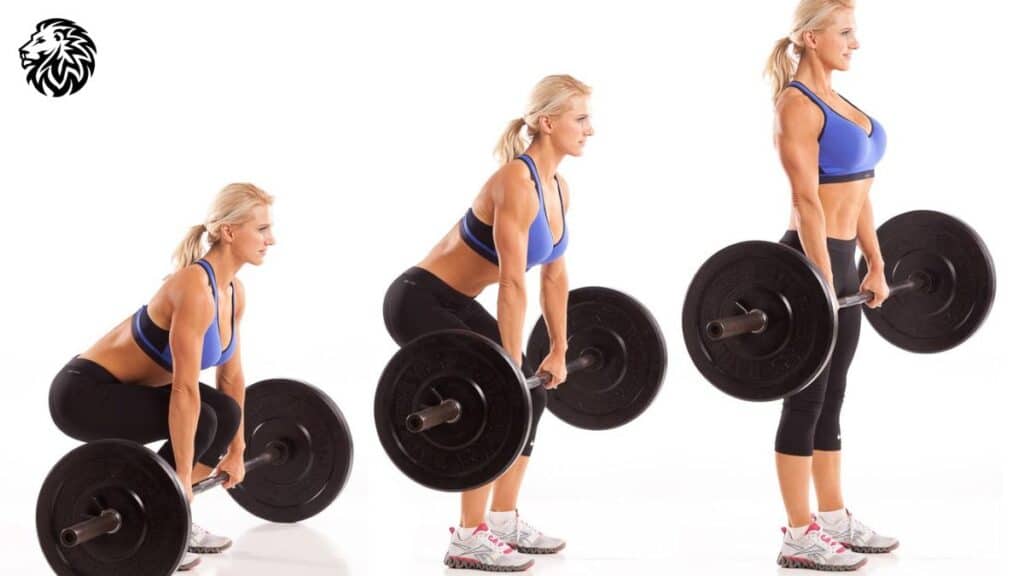
Explanation of the Exercise: Deadlifts are a compound exercise that primarily targets your back, but also engages your legs, arms, and core. To perform a deadlift, you’ll start with a barbell on the ground, bend at your hips and knees to grip it, then stand up straight, lifting the barbell.
The Benefits of Deadlifts: Deadlifts are a versatile, whole-body exercise that not only strengthens the muscles in your back, but also in your lower body and core. They can improve your posture, balance, and overall strength, making them an essential part of any workout regimen.
Pull-ups/Chin-ups
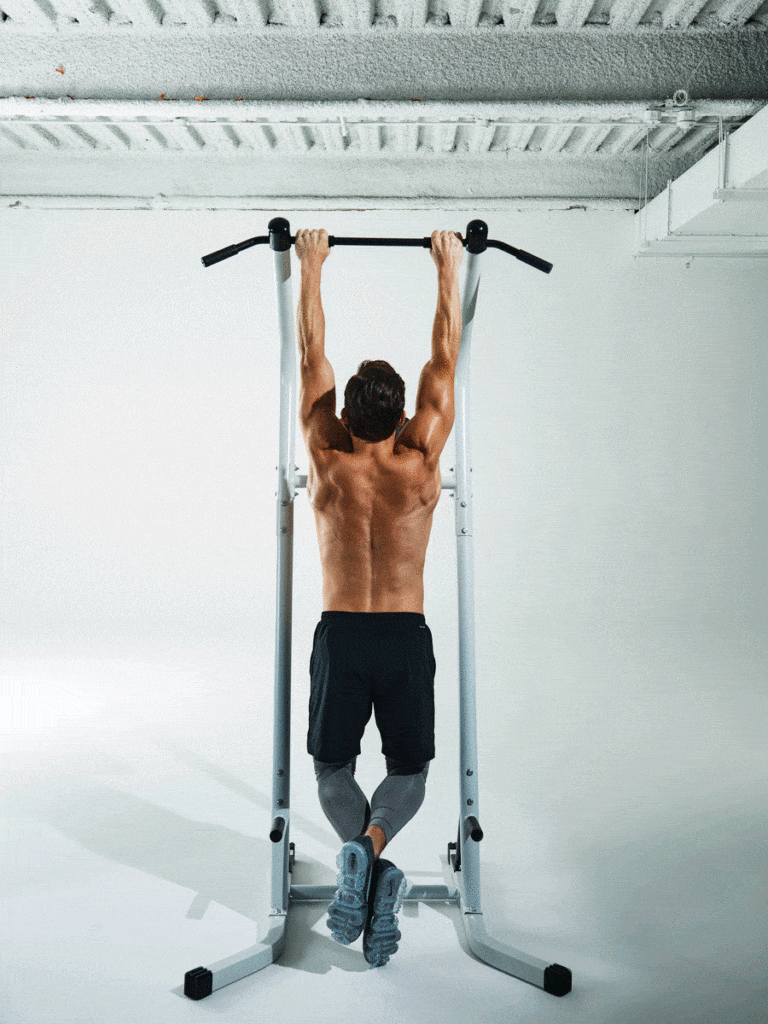
Explanation of the Exercise: Pull-ups and chin-ups are bodyweight exercises that mainly target your upper back and biceps. For pull-ups, your palms face away from you, and for chin-ups, your palms face towards you.
The Benefits of Pull-ups/Chin-ups: They strengthen your lats, traps, and rhomboids while improving your grip strength. Over time, these exercises can contribute to a broader back and improved upper body strength.
Bent-Over Rows
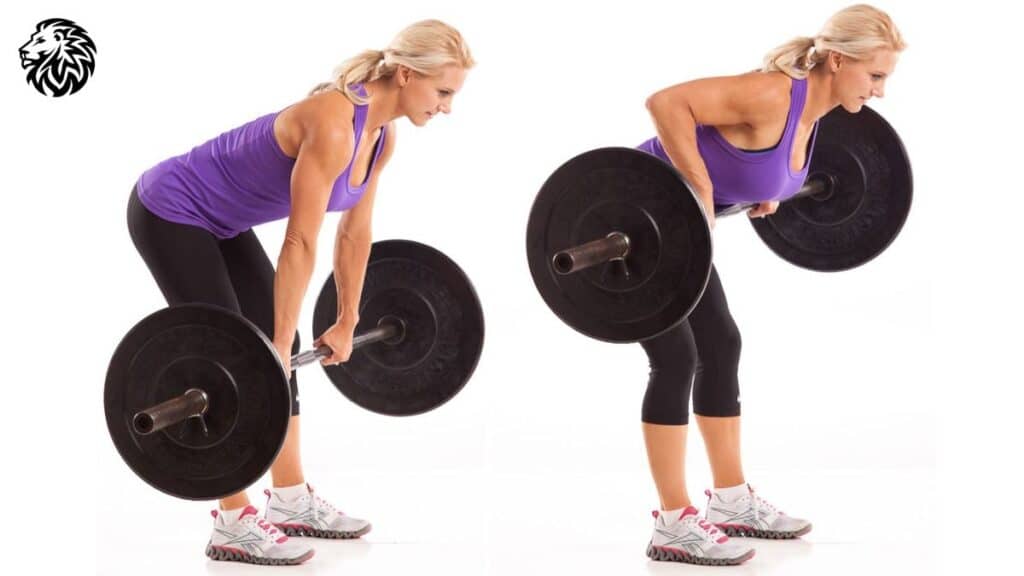
Explanation of the Exercise: This exercise targets your lats, traps, and rhomboids. To perform a bent-over row, you start by holding a barbell or dumbbells while bending at the hips, keeping your back straight. You then pull the weight up to your chest, squeezing your shoulder blades together at the top of the movement.
The Benefits of Bent-Over Rows: Bent-over rows are great for improving upper body strength, enhancing posture, and contributing to a well-defined back.
Lat Pull-Downs
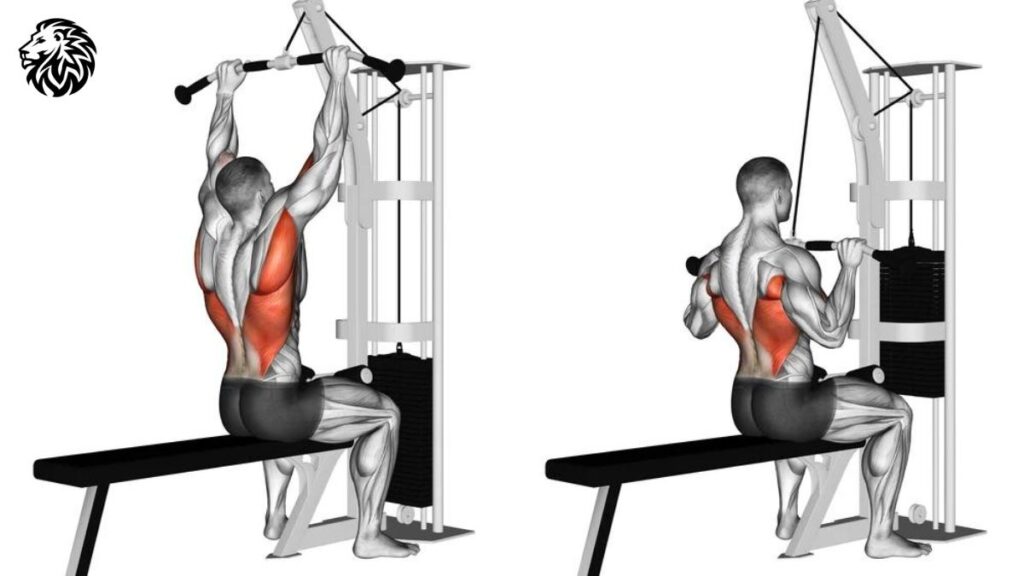
Explanation of the Exercise: Lat pull-downs are performed on a cable machine, where you pull a weighted bar down towards your chest while keeping your back straight and your core engaged.
The Benefits of Lat Pull-Downs: This exercise specifically targets your latissimus dorsi (lats), helping to build a wide, strong back. It also works your biceps and shoulders to a lesser degree, promoting overall upper body strength.
T-Bar Row
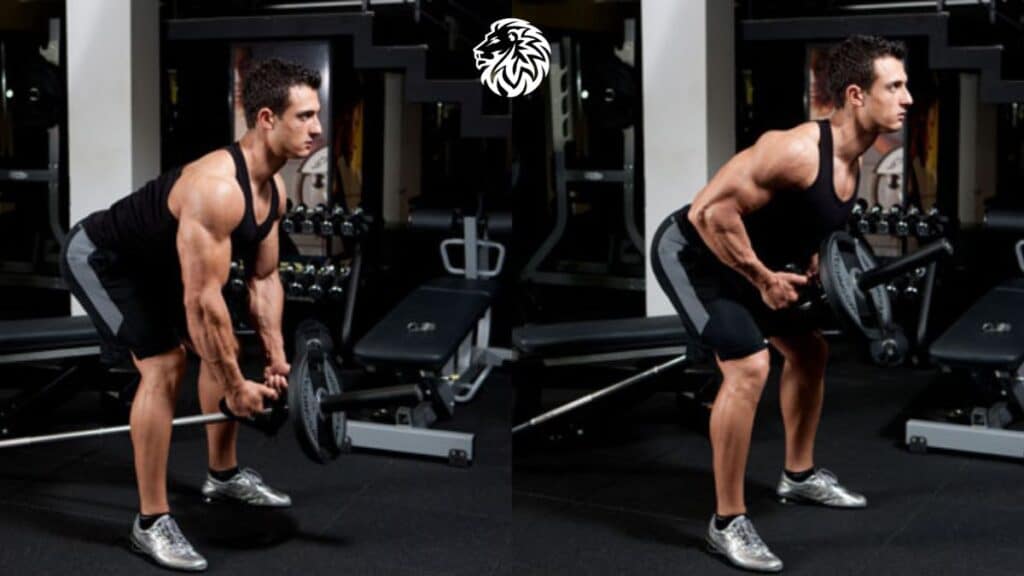
Explanation of the Exercise: For T-bar rows, you will straddle a T-bar or landmine, bend at your hips keeping your back straight, grasp the bar with both hands, and then pull the bar towards your chest, keeping your elbows close to your body.
The Benefits of T-Bar Rows: T-bar rows work multiple muscles in your back, including your lats, traps, and rhomboids. They are a versatile compound movement that can lead to significant muscle growth and strength gains in your back.
Bicep Exercises for Muscle Growth
Barbell Curls
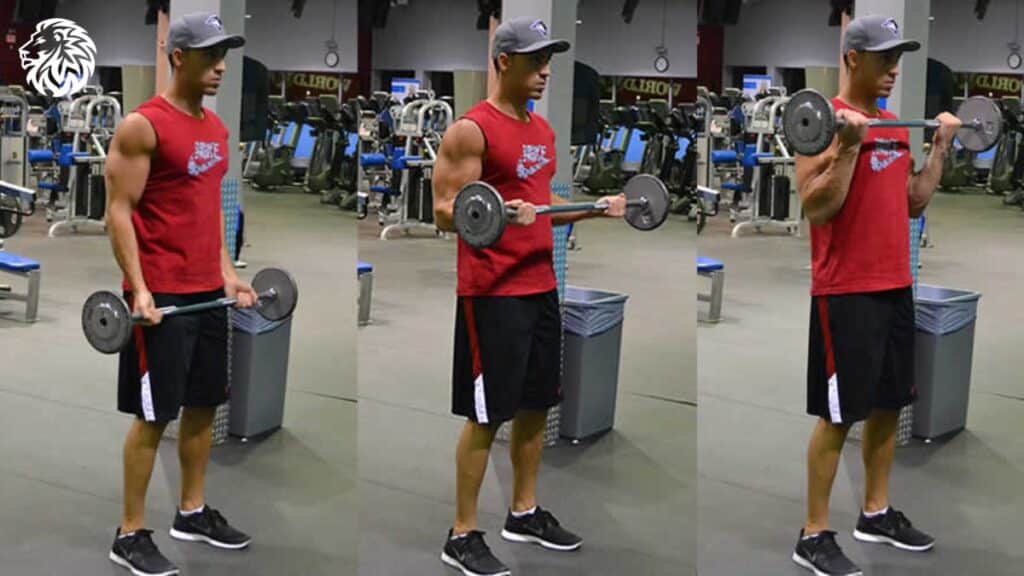
Explanation of the Exercise: Barbell curls are a classic bicep building exercise. Stand up straight with a barbell in your hands, palms facing forward, and elbows close to your torso. Curl the weights while contracting your biceps as you breathe out. Only your forearms should move, maintaining your upper arms stationary.
The Benefits of Barbell Curls: Barbell curls are excellent for developing mass and strength in your biceps. They also help improve grip strength and muscle endurance.
Hammer Curls

Explanation of the Exercise: Hammer curls are similar to traditional bicep curls, but with a different grip that targets not only the biceps but also the brachialis, a muscle of the upper arm. Hold dumbbells in each hand at arm’s length, palms facing your torso. Keep your upper arms stationary, exhale and curl the weights while contracting your biceps.
The Benefits of Hammer Curls: They are fantastic for developing the biceps, brachialis, and improving overall arm strength and size.
Incline Dumbbell Curls
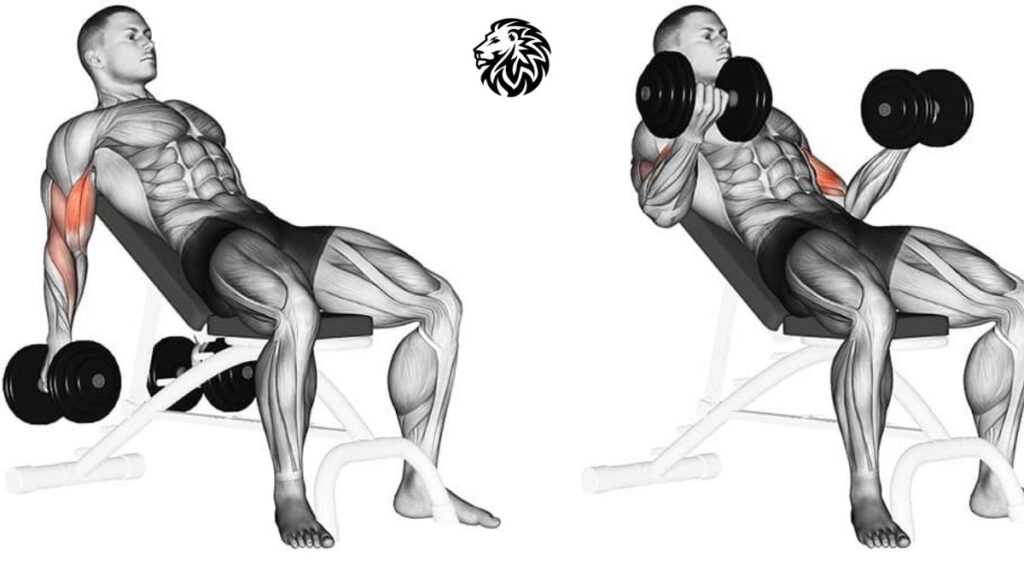
Explanation of the Exercise: Sit back on an incline bench with a dumbbell in each hand held at arm’s length, palms facing forward. Keeping your upper arms still, curl the weights while contracting your biceps as you breathe out.
The Benefits of Incline Dumbbell Curls: These are great for isolating the biceps as the incline angle puts your arms behind your body and prevents you from using your shoulders or back during the lift.
Preacher Curls
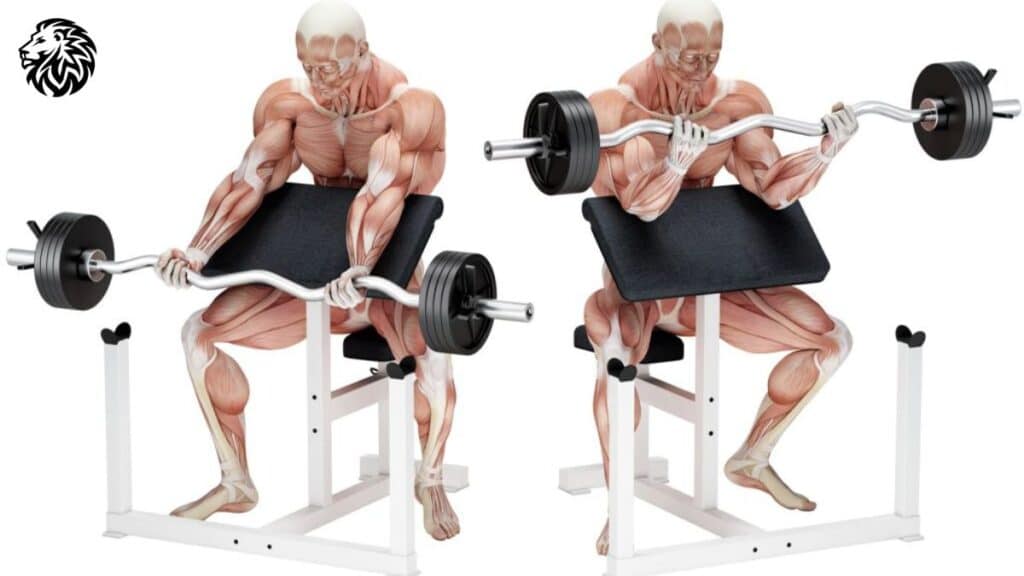
Explanation of the Exercise: This exercise requires a preacher bench and a barbell. Hold the barbell with your palms facing forward, upper arms positioned against the preacher bench pad. Curl the bar upward in an arc towards your shoulders as far as you can while you inhale.
The Benefits of Preacher Curls: Preacher curls are excellent for isolating the biceps, minimizing the role of other muscle groups. They are great for enhancing bicep peak and improving arm aesthetics.
Concentration Curls
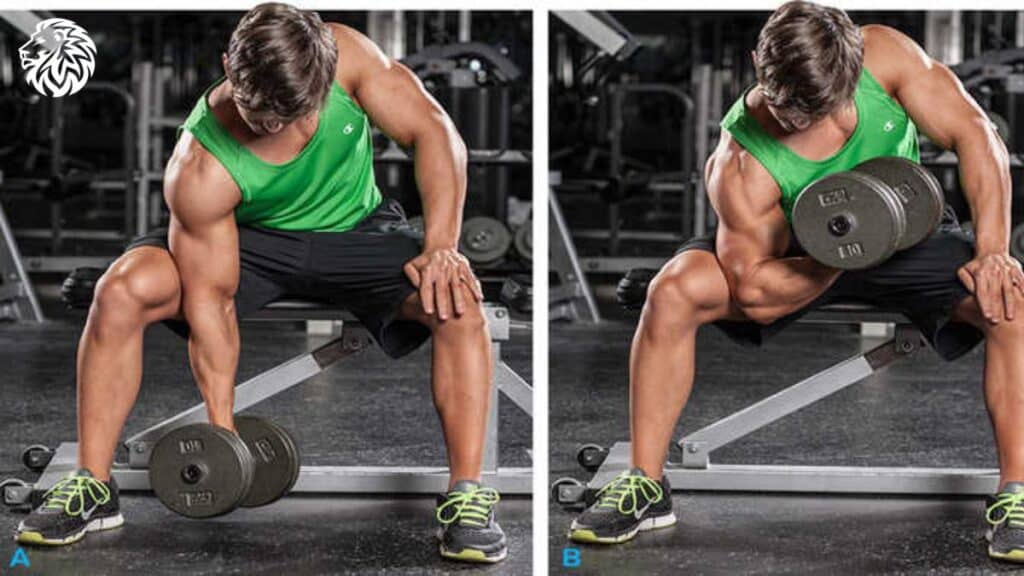
Explanation of the Exercise: Sit on a bench with your legs spread. Rest one arm against the same side leg, letting the dumbbell hang between your legs. Keep your upper arm stationary, curl the dumbbell towards your chest while contracting your biceps as you breathe out.
The Benefits of Concentration Curls: This exercise effectively isolates the biceps, preventing other muscles from helping. They are highly effective for developing bicep peak, thus enhancing bicep definition and size.
Workout Routines and Schedule
Recommended Frequency for Back and Bicep Workouts
For optimal muscle growth, it is generally recommended to target each muscle group at least twice a week. This means you should be performing back and bicep exercises two times a week, allowing for at least 48 hours of rest between sessions for recovery and muscle repair.
Sample Workout Routine Including Both Back and Bicep Exercises
Here is a sample routine to hit both back and biceps effectively:
- Deadlifts: 4 sets of 8-10 reps
- Pull-ups: 4 sets of 10-12 reps (you can use an assist machine or band if needed)
- Bent-Over Rows: 4 sets of 10-12 reps
- Lat Pull-Downs: 3 sets of 12-15 reps
- T-Bar Row: 3 sets of 12-15 reps
- Barbell Curls: 3 sets of 10-12 reps
- Hammer Curls: 3 sets of 10-12 reps
- Incline Dumbbell Curls: 3 sets of 12-15 reps
- Preacher Curls: 2 sets of 15-20 reps
- Concentration Curls: 2 sets of 15-20 reps
Tips for Varying Exercises and Progression Over Time
- Progressive Overload: To continue growing your muscles, it’s important to gradually increase the intensity of your workouts. This could mean adding more weight, doing more repetitions, or increasing the number of sets.
- Variation: Change your exercises occasionally to target your muscles in different ways and avoid a plateau. This could mean using different equipment, changing your grip, or trying a new exercise that works the same muscle group.
- Rest and Recovery: Remember to allow your body enough time to rest and recover. Overworking your muscles can lead to injury and hinder your progress.
- Consistency: The most important factor in any training program is consistency. It’s better to stick with a moderate workout routine consistently than to start a high-intensity routine that you can’t maintain.
Additional Tips for Maximizing Muscle Growth
The Importance of Warm-Ups and Cool-Downs
Warming up before starting your workout is essential to prime your muscles and prevent injury. This could involve light cardio to raise your heart rate and some dynamic stretches. After your workout, a cool-down period is equally important. It allows your heart rate to return to normal and could involve static stretching to help improve flexibility and promote muscle recovery.
Strategies for Breaking Through Plateaus
If you hit a plateau in your muscle growth, consider adjusting your workout intensity, adding more variety to your exercises, increasing your calorie intake, or even taking a short break to allow your body to recover. Mixing up your workout routine every 4-6 weeks can also prevent plateaus by keeping your muscles challenged.
Addressing Common Mistakes and Misconceptions
- Training too Often: More isn’t always better. Training too often without allowing your body enough time to recover can lead to overtraining, which may hinder muscle growth.
- Neglecting Nutrition: Nutrition plays a crucial role in muscle growth. You need a balanced diet rich in protein, carbohydrates, and healthy fats to fuel your workouts and promote muscle repair and growth.
- Not Focusing on Form: Lifting heavier weights isn’t effective if your form isn’t correct. Always prioritize good form over heavy weights to effectively engage your muscles and prevent injuries.
- Unrealistic Expectations: Muscle growth takes time, consistency, and patience. It’s important to set realistic goals and not to compare your progress with others. Your body, your journey.
Conclusion
In this article, we’ve examined the importance of targeting back and bicep muscles for overall body strength and muscle growth. We’ve delved into the anatomy of these muscle groups and outlined effective exercises for stimulating them. We have also provided a sample workout routine, tips for progression, and strategies for maximizing muscle growth.
Embarking on a journey of muscle growth requires commitment, perseverance, and patience. Remember, it’s not about instant results, but steady progress. Your efforts and consistency will pay off over time, leading to not only a stronger, more muscular physique but also a healthier, more confident you.
Now that you’re equipped with this knowledge, it’s time to put it into practice. Start incorporating these workouts into your routine, stay consistent, and don’t forget to focus on proper form and nutrition. Make the most of these tips, break through those plateaus, and take your muscle growth to new heights. We’re excited to see where this fitness journey takes you. Get out there and lift!
Frequently Asked Questions
How often should we train our back and biceps for maximum muscle growth?
Training each muscle group 2-3 times a week allows for optimal muscle stimulation and growth.
What role does nutrition play in muscle growth?
Nutrition is key in muscle growth. A balanced diet rich in protein, carbohydrates, and healthy fats can support workout recovery and muscle building.
Can we do back and bicep workouts on the same day?
Yes, it’s common to pair back and bicep workouts as they often work together in pulling movements.
What other exercises can support back and bicep growth?
Incorporating compound exercises such as rows, chin-ups, and lat pulldowns can further enhance back and bicep growth.
How much rest is needed between back and bicep workouts?
It’s advisable to have 48-72 hours of rest between intense workouts of the same muscle group to allow for recovery and growth.







